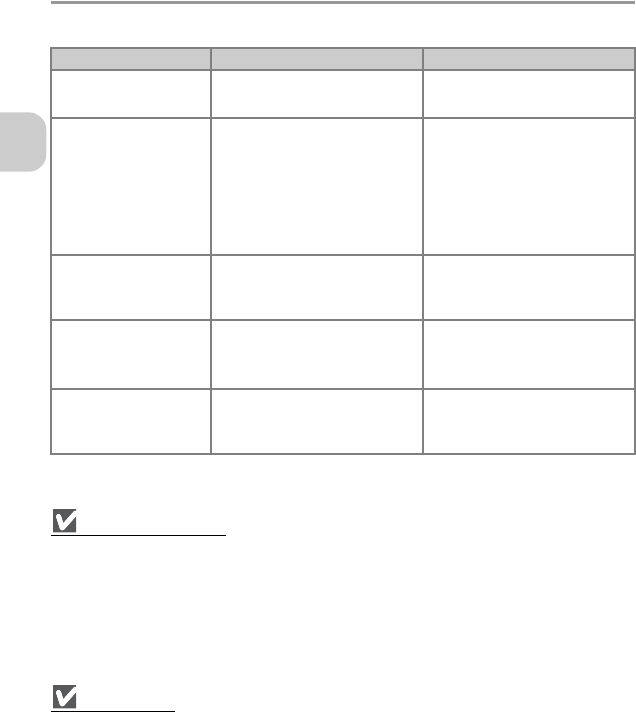
28
Basic Photography and Playback
Using the Flash
The following five flash modes are available:
Red-Eye Reduction
Pre-flashes are fired several times at low-intensity before the main flash to reduce “red-eye”. If the
camera detects “red-eye” after a picture is taken, advanced red-eye reduction will further reduce
“red-eye” when storing the picture. Using this function, there is slight delay before you can press
the shutter-release button again for the next shot.
Select another flash mode in the following cases:
• When quick shutter response is required.
• When red-eye reduction does not produce the desired results.
• In rare cases when other picture areas may be affected as well as the “red-eye” area.
Flash Range
•When SENSITIVITY is set to Auto:
Zoom out : Approx. 0.4 - 4.0 m (1 ft. 4 in. - 13 ft. 1 in.)
Zoom in : Approx. 0.4 - 2.0 m (1 ft. 4 in. - 6 ft. 7 in.)
• The flash may not be able to light the entire subject at distances of less than 0.4 m (1 ft. 4 in.).
When taking close-ups, check the results after each shot.
Mode Description When to use
z Auto
(default setting)
Flash fires automatically when
lighting is poor.
Best choice for most situations.
A
Auto with
red-eye
reduction
Pre-flashes are fired several
times at low-intensity before
the main flash to reduce “red-
eye”. If “red-eye” is detected
after a picture is taken, the
camera will correct “red-eye”
when storing the picture.
• Use for portraits (works best
when the subject is within
range of the flash and look-
ing at the pre-flashes).
• Not recommended when
quick shutter response is
required.
B
Flash Cancel
(off)
Flash will not fire even when
light levels are low.
Use to capture natural lighting
under dim light or where use of
the flash is prohibited.
C
Anytime
Flash
(fill flash)
Flash fires whenever a picture is
taken.
Use to lighten dark shadows
and for back-lit subjects.
D
Slow sync
Flash fires automatically and a
picture is taken with a slow
shutter speed.
Use to capture both the subject
and background at night or
under dim light.


















